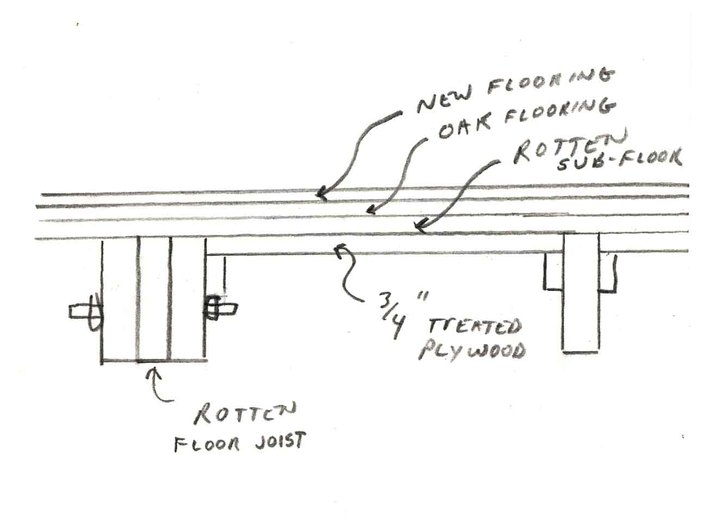Stan in Oly, WA
Well-known Member
I was working in the crawlspace of a house I own and discovered that the subfloor (shiplap running diagonal to the joists) is badly rotted around the chimney. The rotted wood is powdery dry now because I corrected the moisture problem several years ago. The floor above the rotted subfloor is ceramic tile, possibly over durock (cement board) underlayment, but possibly over plywood. It doesn't matter either way.
Can anyone suggest some sort of material that I could put on top of plywood patchs to fill the voids when I press up from underneath? Something about the consistency of joint compound would be ideal. I actually considered using joint compound, but decided against it because the area did have a moisture problem once. Probably never will again, but still...
Thanks,
Stan
Can anyone suggest some sort of material that I could put on top of plywood patchs to fill the voids when I press up from underneath? Something about the consistency of joint compound would be ideal. I actually considered using joint compound, but decided against it because the area did have a moisture problem once. Probably never will again, but still...
Thanks,
Stan



